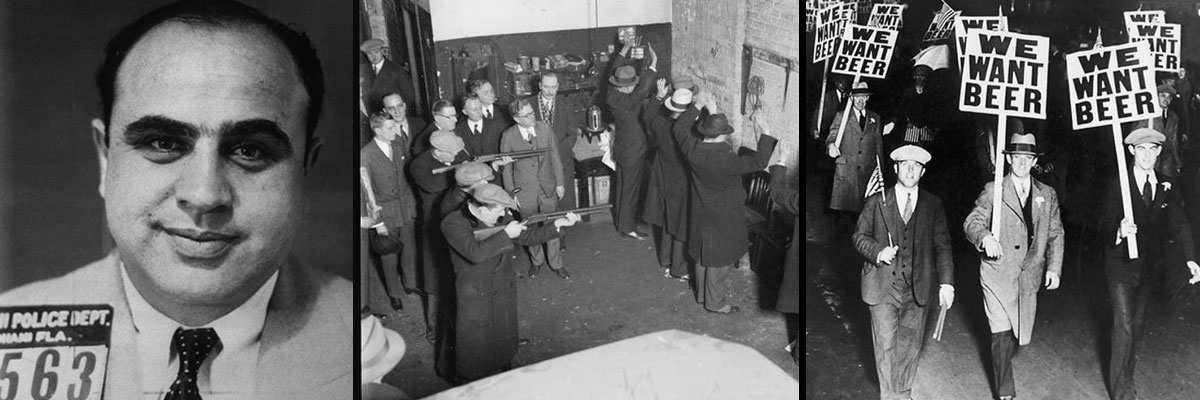1934 - The Birth of American Gun Control
1934 - The Birth of American Gun Control
In many other countries, some with extremely stringent firearms laws, silencers are simply seen as a polite muzzle device purchased over the counter. Many question why we as Americans are required to submit complex paperwork, wait months, and pay a $200 tax just to own an accessory to mitigate hearing damage.
To answer those questions, one has to look at how the NFA (National Firearm Act) came to be. Going back to the Roaring Twenties, to prohibition, and the Great Depression, America was quickly changing. Organized crime was on the rise, and machine guns were becoming a favorite weapon of gangsters. Although crime as a whole was decreasing, the organized nature and brutality was unprecedented.
At the time, Franklin D Roosevelt was the governor of New York, and had witnessed many innocents hurt by gang violence. High profile crimes such as the Valentine’s Day Massacre caused fear in the hearts of many Americans. These events would shape actions occurring after his election to presidency in 1932. With a failed assassination against him in 1933, his determination to reduce organized crime was further strengthened.
The National Firearms Act was a response to organized crime, arguably sparked by prohibition. Rather than a true solution to the root problem, it nearly became a large scale ban on most all firearms. The early versions of the NFA attempted to ban pistols and revolvers, as well as an outright ban on machine guns. Realizing that a ban of this magnitude would have trouble passing, and would certainly be challenged, the NFA was revised. In its new form, a de facto ban on certain firearms, it gained support by both Roosevelt and the National Rifle Association.
The National Firearms Act required specific items to be on a national registry. To possess these items, it required paperwork, law enforcement approval, federal approval, and a $200 tax paid. In today’s computer age, this has process has been streamlined through technology; however, it was originally quite a cumbersome process. The $200 tax today is more of a nuisance than a financial barrier, but in 1934 it was a substantial amount of money. To put things into perspective, the average cost of a house in 1934 was just over $500. While the NFA wasn’t a full ban on specific items, it allowed only the rich and powerful to possess them. Machine guns, silencers, and other items were far outside the reach of the average American.
Under the NFA, the regulated firearms include short barrel rifles, short barrel shotguns, machine guns, destructive devices, silencers, and ‘any other weapon.’ Short barrel rifles and shotguns were included due to their concealable nature. Because of their infamy in the short lived prohibition era, machine guns were added, and destructive devices because of the potential for large scale damage. AOW, or Any Other Weapon, was also included. An AOW only requires a $5 tax paid, and is a class of weapons that don’t fall into standard categories. Some include firearms disguised as pens, or weapons resembling pistols designed to be fired with two hands.
While the above items were a reaction or organized crime, the inclusion of silencers into the National Firearms Act has a more sordid history. The true reason is obfuscated by time, however it is widely believed their addition was due to fear of poaching. With wealthy land owners and ranchers afraid of livestock falling to poachers, the relatively new invention of the silencer became under attack. The wealthy had the influence and money to afford such accessories, however the common man could not. The folks unable to afford the tax on a silencer were the same ones most affected by the Great Depression.
In that time, as it is today, criminals were engaging in illegal activities regardless of the weapons being used or methods obtaining them. The first serious act of gun control in the United States did little stop organized crime. The end of prohibition and the economic recovery were most helpful aspects of crime reduction, as were the new methods developed by law enforcement. The National Firearms Act simply gave the most powerful and wealthy people in the country access to weaponry that the average citizen could not have. Thankfully, the financial barrier to entry that was enacted in 1934 is little more than a strong nuisance tax today. While there is still an economic divide when it comes to the affordability of NFA items, that divide is not nearly as large as it was in 1934.


